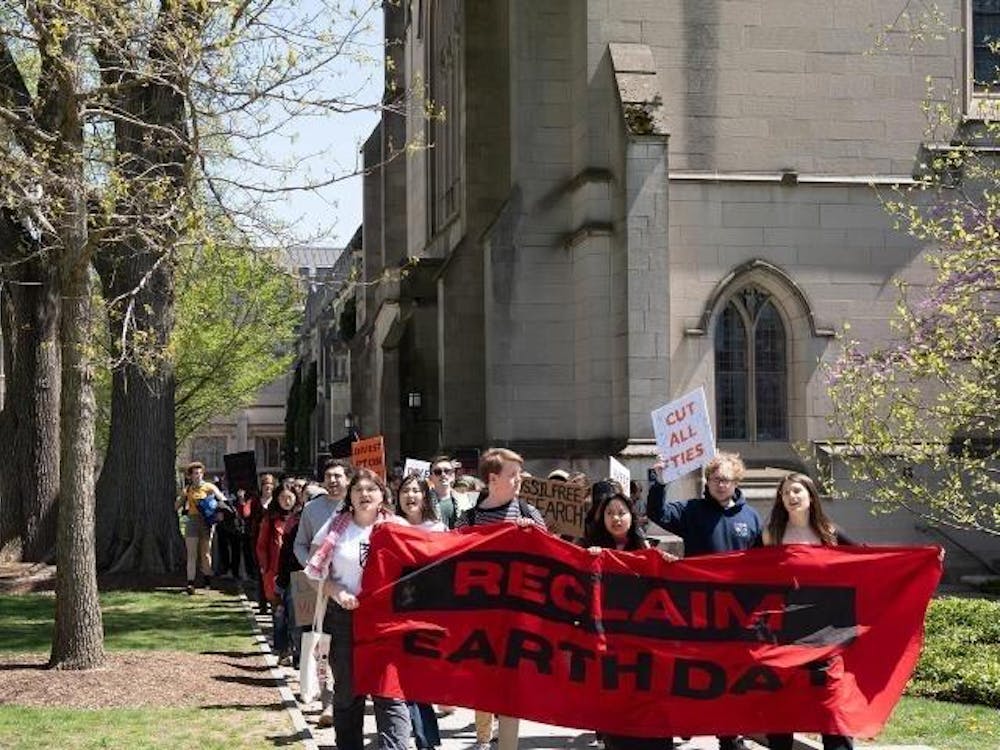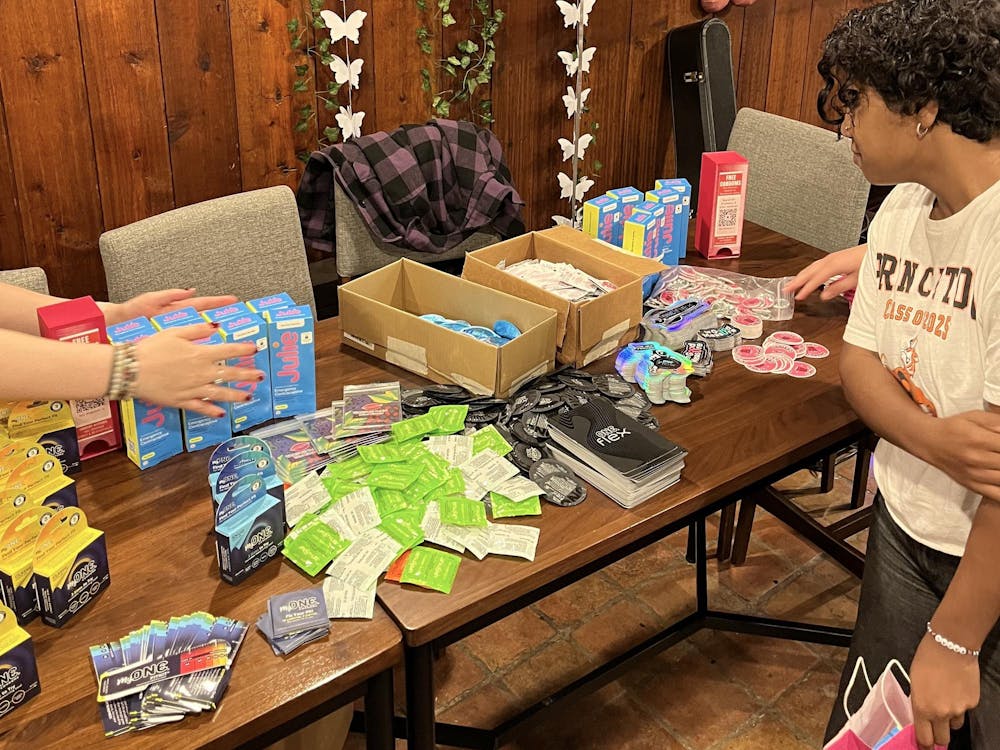Pulitzer Prize-winning journalist Serge Schmemann spoke on campusTuesdayevening about the place of the United States in the international community. Schmemann, the editorial page editor of the International New York Times, spoke to The Daily Princetonian about the future of journalism.
The Daily Princetonian: Tell me about yourself as an undergraduate at Harvard.
Serge Schmemann: Well, I had been thinking about that when I came here because I went to college in the '60s, which was very different in general. It was a very rebellious time, and a lot of questioning and an enormously exciting time, but what I found when I started teaching at Princeton, it was a totally different atmosphere
Harvard is a huge university. It is very much part of Cambridge and very much part of Boston. It is much more diffused thing. You are part of a much larger thing. And [in] the '60s, of course, you were part of a campus tumult. Here, I think there is a very creative compactness. When I was a teacher here,all the students would have gone to the same lecture, to the same concert. It was much more unified life.
I know Princeton alumni are far more loyal to Princeton than Harvard alumni are to Harvard. If you have gone to Harvard, you are part of something so big and something so rich that is very hard … to identify with [it] as an alumni. I have gone to reunions, but it is not the same feeling as going to a high school reunion. But I have to say I loved it. Everyone likes their youth; the '60s were unbelievable. It is very hard to match, and Harvard was definitely a place where it was boiling.
DP: What were you involved in outside of class?
SS: Not enough. At high school, I went to a prep school. I was very active in theater and singing. At Harvard, I got a little bit lazier. Maybe because we had so much just going on in life, talking, meeting. The only thing was, I sang in a group. I don’t have a good voice, but I loved doing it. But I never got involved in The Crimson. I wish, in retrospect, I had.
DP: But you turned out so well anyway — what could have that changed?
SS: I could have done so much more. I really don’t think I took a good enough advantage of Harvard. Part of it was because I went to a restrictive prep school and Boston gave us so much freedom that we were always out there.
DP: What sparked your interest in journalism?
SS: Well, already at Harvard I was fascinated by the reporters in Russia covering dissidence. I thought it was a really heroic act to do the kind of reporting that told us something that the Soviet Union wanted to conceal. That attracted me a lot.
In Vietnam, I began to feel I much more wanted to describe what was happening than to form opinions about it or to have a strong sense of right and wrong. I really felt that I enjoyed trying to understand it, to define the reason something is happening.

I wrote a lot of letters to my father, which I hoped to publish some day, but I just found I took great pleasure in writing about events, about something like the Vietnam War. Being there and seeing how others were writing about it really intrigued me. I realized this was my real calling. By the time I came back, I immediately started immediately looking for a job in reporting.
DP: What is your biggest regret as a journalist?
SS: I have none. I know there are things I would have liked to have done, but you can’t do much more. I wish I would have spent a little bit of time in Asia between Russia and the Middle East and Africa. I don’t have a lot of regrets, but a few years in Asia would have rounded it out, but, in a way, it wouldn’t have made any sense. In a way, you would have to specialize, and that would have taken for ever.
DP: Which journalist do you admire most?
SS: Well, I had a lot of models, actually. Okay, I’ll say John Darnton. We were in Africa together — he was Times, I was AP. We spent some time together, then he went to Poland.I think he was one of the cleanest writers I have ever met. He was a master of finding thetelling detail that brought a story to life. In fact, his brother was a professor of French history here, Robert Darnton … He was a big model for me. And there were many more, but you said one. And when I have taught journalism, I have always used some of his greatest articles. He had one when he went into Uganda and his lead was, “When a country collapses, there is money to be made.” That’s the kind of thing that I think is masterful.
DP: Do you think print media will die out? When?
SS: Print may end. I am not worried about print. You can have paper or no paper. No big deal. I am convinced now that quality journalism not "will survive," but has survived. It was a huge challenge, and I think that all the people that were seduced by the new media, especially by social media, by this sense of democracy in media, have realized that quality journalism is necessary to explain what is happening. I think it is confirmed by the number of people that go to the major news sites in times of crisis. It is confirmed by The New York Times that is getting new subscribers every day on the Internet.
What we lack now is not so much that convincing the world of the need for quality journalism but finding a new economic model.
The 19th-century model of advertisements supporting newspapers is changing. We just don’t make enough money on the Internet; it’s one-tenth less per ad. An ad on the Internet is one-tenth less than the ad on paper. That is going to change. We need to find a new economic model. We will. It won't be me, though.
DP: What is the future of journalism?
SS: There will be quality journalism. It may not come to you on a paper. It may not even come to you on a screen. Who knows what it's going to come on. It is moving more and more towards tablets. Tablets have made huge progress in the way they display stories, in how they lay them out. They are beginning to duplicate the function of a newspaper. There is a page one, the most important stories, a feature page. All that is coming to a tablet near you. What we have to figure out is a pay model, and we have to figure out how to write news so that it is relevant to a far greater audience. I can write a story right now, and in 10 seconds people are reading it in Hong Kong, and I have no idea what they want to read. I know what people in New York want to read, and I know what people in Princeton need to read, but I have no idea what people in Hong Kong want to read.
We have to create a system of curation, of editing, that meets the needs of different reading audiences. These are big challenges, but, as I said, I’ve become convinced that we have survived, as we’ve gone through it. It’s been a good number of years.
DP: In your opinion, what is one recent international issue that has been under-covered?
SS: The major global issues are the ones that actually do get the attention. The rise of China has been indulgently covered, the Arab Spring, the Middle East, Iraq wars. I mean, these are the kind of things that change the world, like climate change. I think, on the major issues — I may be wrong, but I think on the major issues, we’ve not lost a lot. What we may be losing by the laying off of reporters is the texture, the context. We may not be telling the foreign or the local stories as well, because for that you have to live in a place, you have to invest the reporter’s time. There’s a lot more pressure on reporters to write more. Before, you could take a week to do a feature. Now you can’t take a week. So we’re losing that texture. But I think on the major events, we’ve been doing pretty well.
DP: Once print journalism dies, how will journalism change?
SS: In a way, print journalism has died. Every newspaper now has a website. At the Times, for example, web and print are pretty much edited by the same people now. The distinction is lowered. The web requires constant updating … It’s already happening. We’ve already moved into a new era of 24-hour news ... I think that with time, we will reinvent the wheel. Because the format and style of print journalism is not decided by paper. It’s decided by how people read, how long they read. Eight hundred is about all people read. I mean, people spend about 20 minutes on news a day. So you can’t give them endlessly long stories. But even on Huffington Post, I’ve noticed they’ve gone down to the normal column length. You know, they could go on forever. We’re reinventing the notion that a reporter needs time to report. You cannot force them to sit there and update a story and never to go out there and talk to people, so reporting’s going to make a comeback. The other thing that everybody expects from a newspaper and values in newspapers is the placement of articles, and the lede, and the off-lede. Every position is critical. After 9/11, the Times devoted a whole front page to 9/11. It was an upside-down front page. And people actually valued that because that is one of the services of a newspaper, to order the world for you. These are the things that are important, and these are the things that are less important. All of this is being invented, as I said, on tablets. So, little by little, we’re reinventing what a newspaper provided, just not on paper. And that’s just as well. You know, the Sunday New York Times was 80 square miles of forest. It’s a huge amount of wood that is wasted on these things.
DP: When is video-journalism or photo-journalism more powerful than a written news story?
SS: In any disaster. These tornadoes right now — you’ll notice every paper has a massive image of the Philippine typhoon. For demonstrations, when it gives you a sense of the scope. For those things, photography plays a huge role in shaping the story — for those events that are visual to begin with. You know, we’re trying. I do a little magazine, and we’re trying to move into all kinds of graphic journalism. Our cartoonist now does cartoon stories, where he intersperses news and images because these kinds of things play well on the Internet. And I think the Internet gives a lot more scope for visual journalism, and I think we’ll be experimenting with that a lot more. But the impact is really when you have a cataclysmic event where a photograph is much more instant and strikes you much harder than words. But it’ll be a combination.








